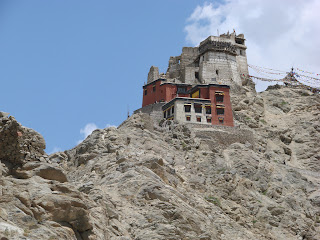watch on youtube
ABOUT PUNJAB
The culture of Punjab has its own unique fragrance.
It is unmatched. The scent of this fertile land is
such in which the warmth of you-are-my-own is inborn.
All communities hold pride in their traditions and the
Punjabis whose open-mindedness has become proverbial
also hold their unique tradition of hospitality high
in their estimation as well as in their values of life.
A guest in Punjab is considered as a representative
sent by God.The land of Punjab, which is described as
the land of Gurus, Pirs and the warriors, as a matter
of faith believes in earning honest living through hard
labour and in sharing the fruits of this labour with
others, without expecting any returns. Hospitality is
a living aspect of Punjabi culture, which is shown even
to the migratory birds that sojourn here
Hospitality binds people together in bonds of love; it
increases circles of friendship Culture & Heritage - Punjab,
Indiaand makes the atmosphere aglow with human warmth. Punjab
is have proved this in all corners of the world in seemingly
alien lands and because of these qualities they have been
willingly accepted as useful, responsible citizens of the world,
warm neighbours and good friends.Although Punjab has received
hospitality as God's gift, on account of recent disturbances and
rising prices it is coming under strain in the towns and cities.
However, in villages it still reigns supreme. It resides in the
soul of rural folk. Reach a home in the middle of the night, the
ladies will happily get up and cook fresh food for you. You can't
pass by certain villages without enjoying hospitality. You'll be
looked after so long as you stay. You will be warmly sent off, not
empty-handed, but with a gift of whatever is available in the house.
Darbar Harmandir Sahib is known as the Golden Temple
because of its unique features. The gurdwara is
constructed of white marble overlaid with gold
leaf and stands in the center of a sarovar, or
pool of fresh, clear, reflective water which is
fed by the Ganges River. Pilgrims bathe and per
form ablution in the sacred waters of the tank
which is known for its healing properties. Visitors
gather inside the gurdwara to worship,listen to hymns,
and hear the holy scripture of the Guru Granth Sahib read.
It is believed that Rao Bhatti established the modern town of Bathinda
in the Lakhi jungle area in the third century, and it was captured from
him by the Brars. Bala Rao Bhatti inhabited the city in 965 AD, naming
it Bhatti vinda after his surname. The city also remained the capital of
Raja Jaipal. Later the city name was changed to Bhatinda and now a days it
is known as Bathinda.In 1004, Mahmud of Ghazni besieged the local fort,
which was located on the route from the northwest into the rich Ganges valley.
In 1189, Muhammad Ghori attacked and occupied the fort of Bathinda.Prithvi Raj
Chauhan, the ruler of this region, managed to recover possession of the fort
thirteen months later in 1191 after a fierce battle.
Bathinda or Bhatinda, named after the Bhati Rajput kings, is one
of the oldest cities in Punjab and the current administrative
headquarters of Bathinda District. It is situated in north-western
India in the Malwa (Punjab) Region. Courtesy to two artificial lakes
in the city, Bathinda is also known as "The city of Lakes". Bathinda
is a historical city. It was associated with the imprisonment of first
woman emperor of India, Razia Sultan in 1239 in the fort here.
It is home to two modern thermal power plants, a fertilizer plant, a
large oil refinery, a Zoo, and the Qila Mubarak fort. Bathinda is one
of the biggest food grain and cotton markets in northern India, and the
area around Bathinda has become a large grape growing area. Bathinda's
railway station is one of the biggest railway junctions in the country
and is currently undergoing a project for modernization. The Multinational
Corporation Pepsi processes horticultural products grown in Bathinda. It
is considered one of the best cities in Punjab for education.
Bathinda is located on the Indo-Gangetic alluvial plains. Bathinda's
climate correspond to semi arid with high variation between summer and
winter temperatures. Average annual rainfall is in range of 20 - 40 cm.
Summer temperatures can be as high as 50°C (122°F), and winter temperat
_ures as low as 0°C (32°F).The weather is generally dry,but is very humid
from mid-May to the end of August. Rainfall is primarily from the south-west
due to monsoon weather, and is concentrated in the period July to mid-September.
PLACE TO VISIT IN PANJAB
1. Amritsar
2. Patiala
3. Gurdaspur
4. Ludhiyana
5. Nawanshhr
6. Rupnagar
7. Jalandhar
8. Pathankot
9. Bhatinda
10.Talwandi Sabo








No comments:
Post a Comment